5 yoga poses that can help ease anxiety

Many people turn to yoga or meditation as a form of self-soothing when they experience feelings of anxiety.
Try this simple yoga flow to help ground you and bring you back to the present. Bring your focus to your breath, moving slowly and mindfully and noticing how each movement feels.
We spoke to certified yoga teacher Hannah Barrett about five poses you can do at home to help soothe a worried mind.
Child’s pose/balasana
Child’s pose can help to release tension in the back, neck and shoulders which are all common areas we hold stress. This pose can be used at any point during your yoga practice as a place of rest, to slow the breath and calm the mind.
Kneel on the floor with the big toes together and the knees about hip width
Exhale and lay the torso down between the thighs keeping the spine long
Stretch the arms forwards feeling a stretch from the tailbone out through the fingertips
Alternatively, bring the arms back and the hands on the floor alongside the torso with the palms up. Release the fronts of the shoulders toward the floor
Rest here for five slow breaths or longer if required
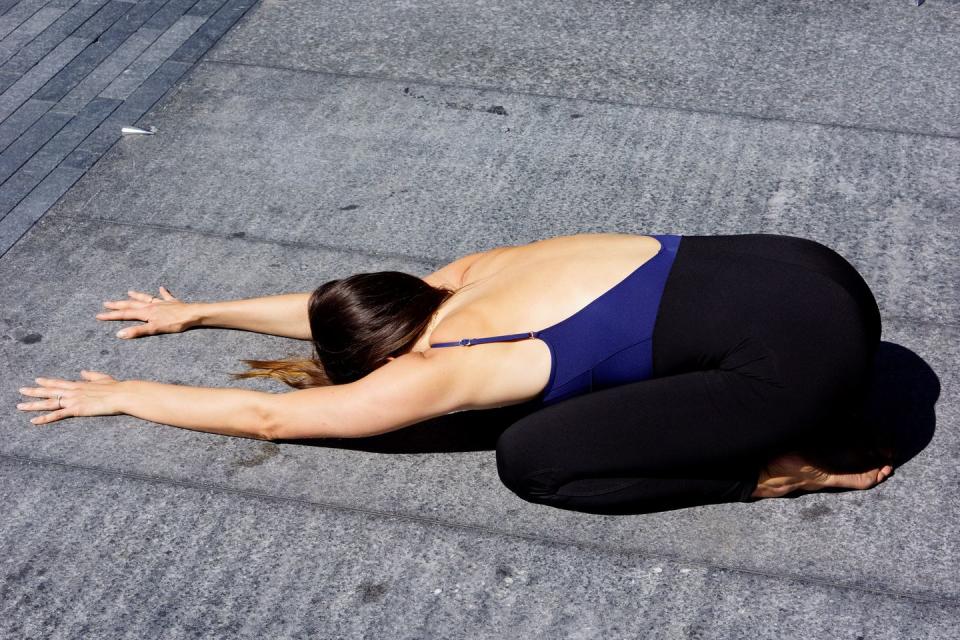
Cat cow
Moving through cat and cow brings fluidity into the body and helps open the chest and back. When stressed our bodies can hold a lot of tension and this can help alleviate it.
Starting in tabletop, wrists under shoulders, knees under hips
Inhale into cow pose, gazing forwards, arching the spine, keeping the neck long and breathing the chest forwards (keep engaging the core by drawing the navel in)
Exhale into cat pose tucking the pelvis under, rounding the back, relaxing the head and pushing the ground away to pull the shoulder blades away from the spine
Continue moving through cow and cat for five full breaths
Cow
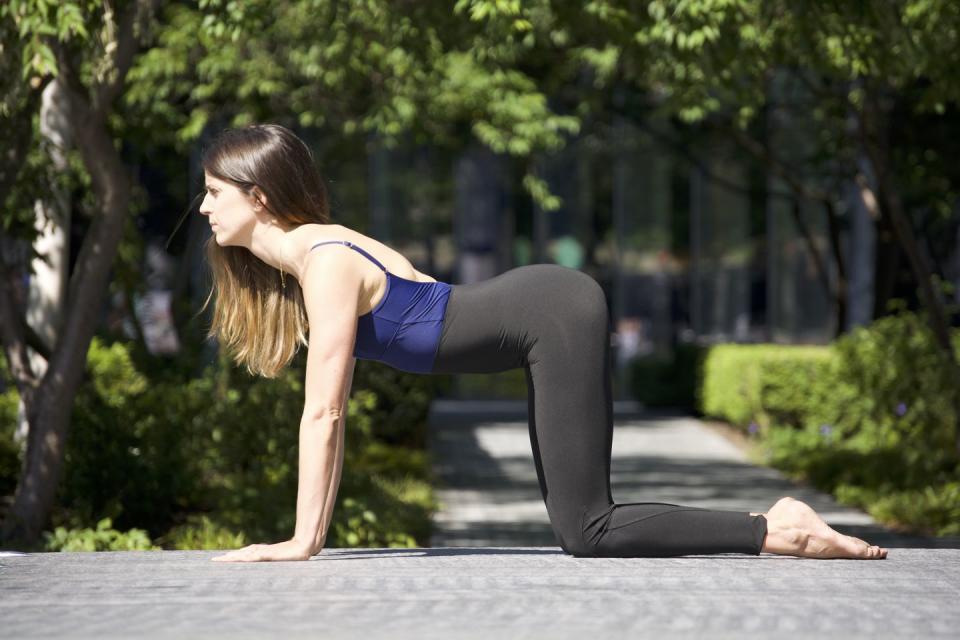
Cat
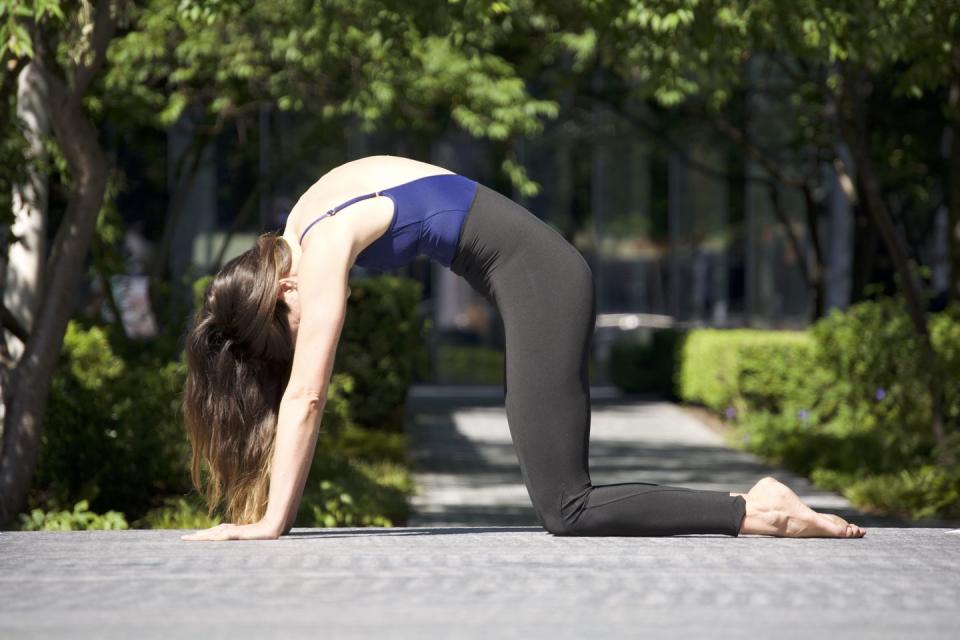
Forward fold/uttanasana
Uttanasana helps to calm the mind and can help to relieve tension headaches. It also helps to stretch the lower back and hips.
Starting at the top of your mat, exhale and slowly bend forward from the hip joints. Find length in the spine as you fold forwards, bending the knees if required
Bring the palms or fingertips to the floor, onto blocks or to the backs of your ankles. Press the whole foot into the floor and lift the sit bones towards the ceiling, turning the top of the thighs slightly in. Hug the lower belly up and in and let the head hang between the arms
Stay here for five deep breaths or more and with each inhale find a little more length in the torso and with each exhale release a little more into the fold
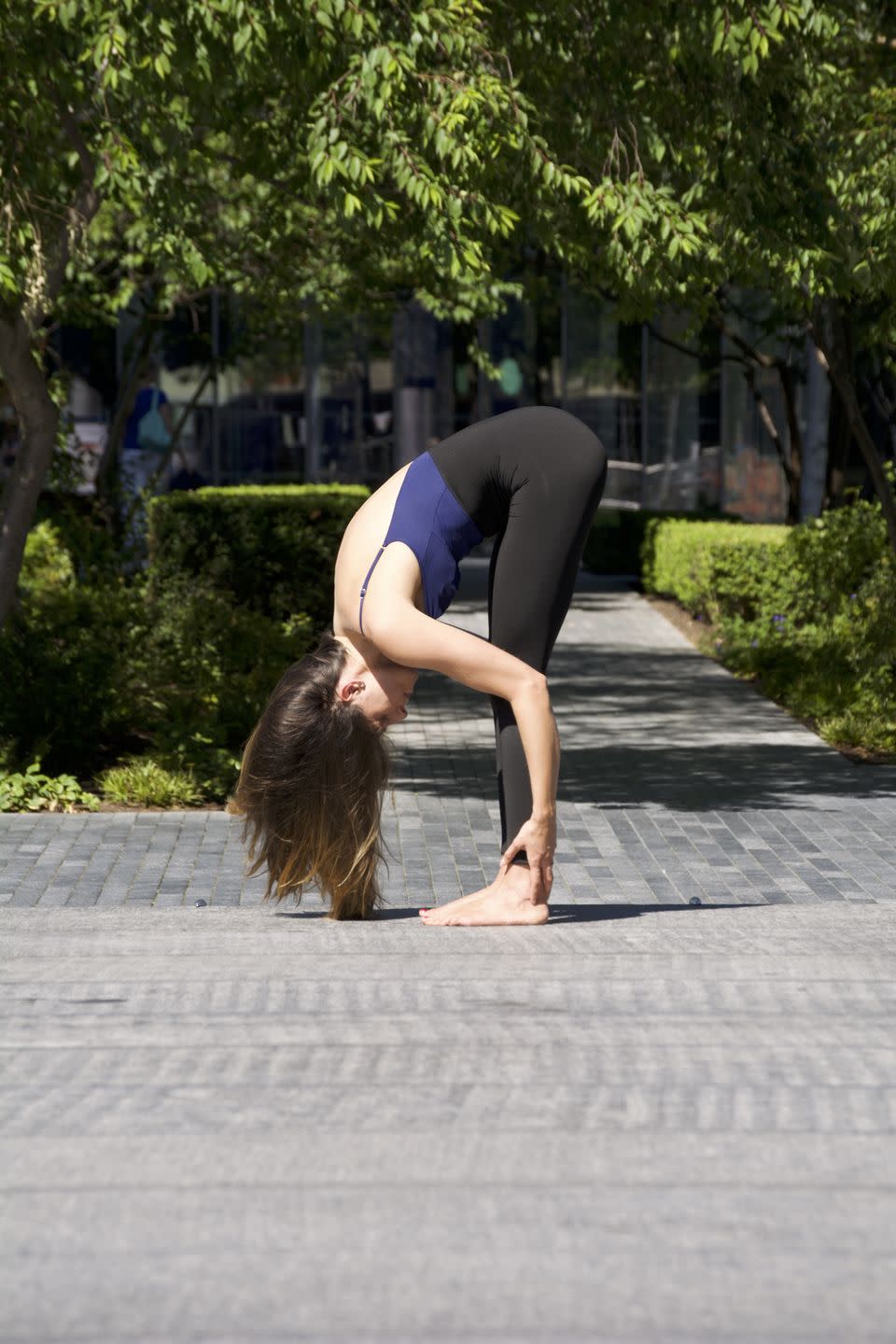
Restorative fish pose/matsyasana
Fish pose helps to relieve tension in the neck and shoulders, open the chest allowing us to deepen the breath and improves blood circulation in the spine thereby helping to alleviate back pain.
Place a pillow, bolster or block horizontal to the short edge of your mat about a foot and a half away from the back of the mat
Option to place another pillow or block for your head at the back of the mat. Gently lie back over the prop(s) bringing the bottom edge just below the tips of the shoulder blades (approximately level with where the bottom of your bra strap sits) and the other under your head (if desired)
Melt the body over the prop and place the arms to the side or overhead – whatever is most comfortable. Stay for 1-2 minutes or more. When exiting the pose gently roll to one side and remove the prop.
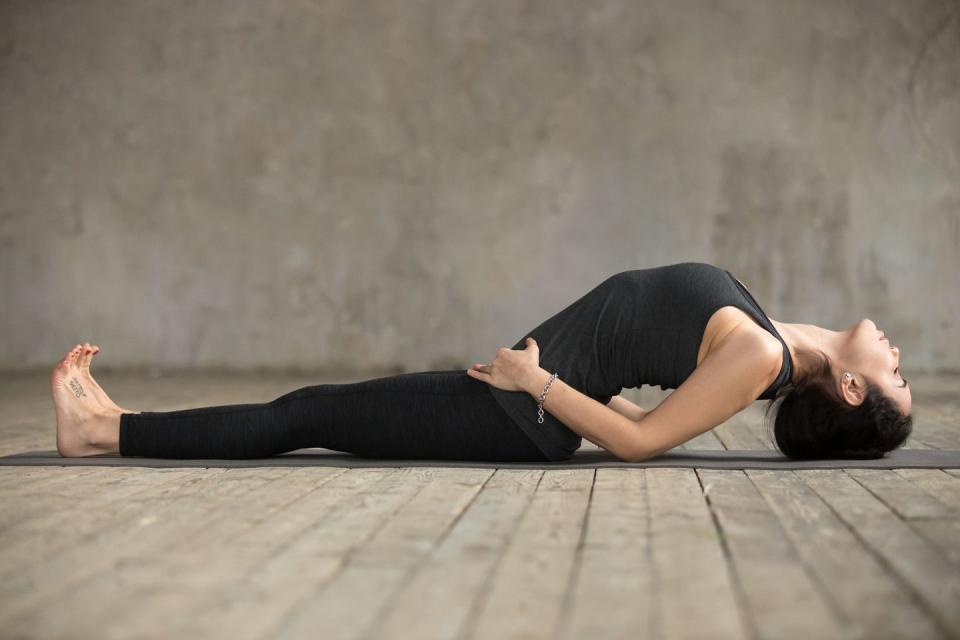
Legs up the wall
Legs up the wall is one of the best stress relieving poses. It helps regulate blood pressure, calm the nervous system and quieten the mind, reducing insomnia, drain fluid from the legs and can improve your digestion.
Bring the hips to the wall, with the upper body flat and sit bones as close to the wall as is comfortable
Gently raise the legs straight up, resting them against the wall.
Option to place a bolster under your sacrum to ease any discomfort in the lower back and help to hinge at the hips (rather than pulling on the lower back)
If you have time, stay here for 5-15 minutes (or longer)
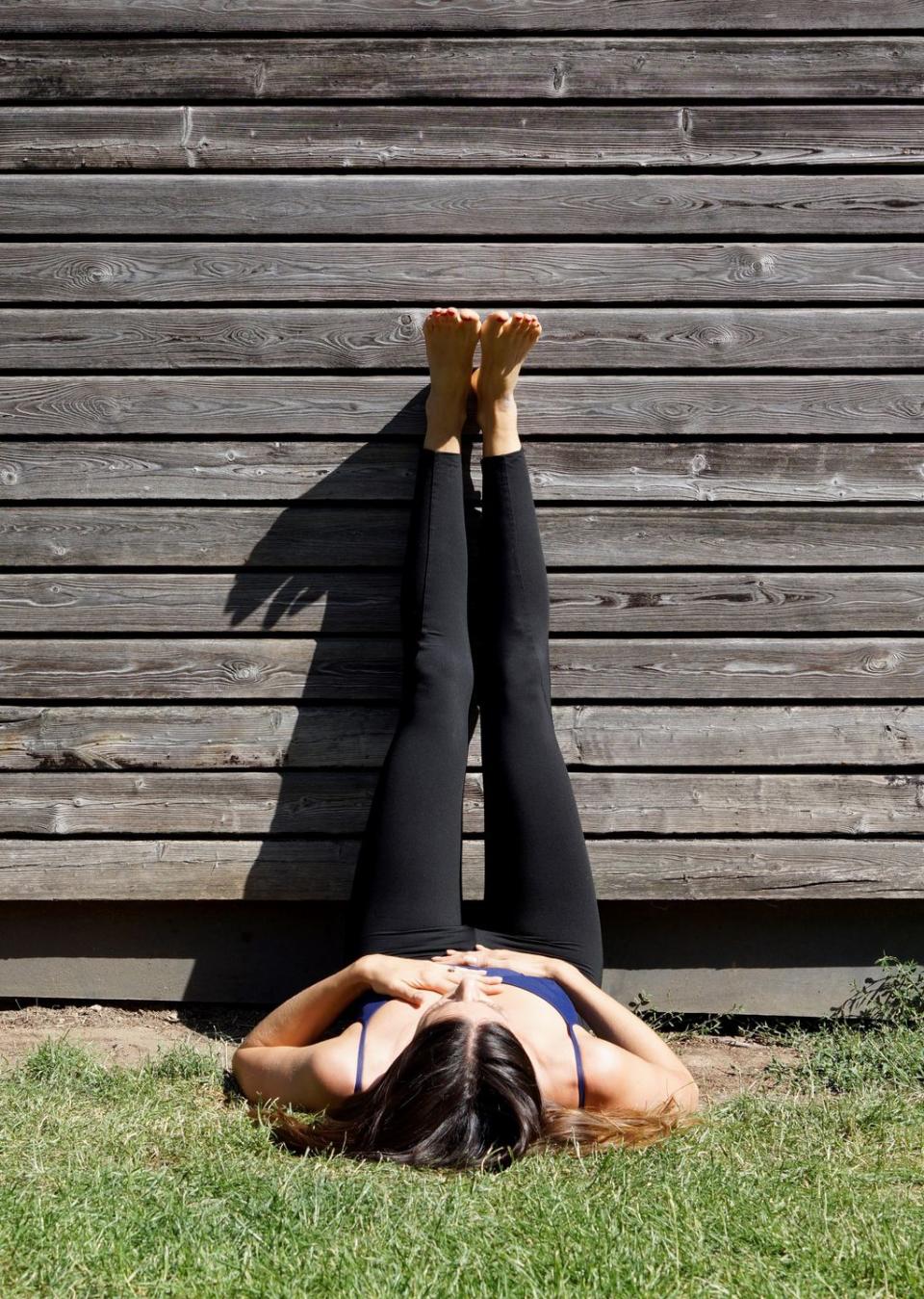
Does yoga really help to relieve anxiety?
Research suggests yoga may help to reduce the impact of exaggerated stress responses and decrease physiological arousal, such as reducing the heart rate, lowering blood pressure and easing respiration. Yoga has also been shown to help reduce cortisol levels, which are released by the adrenal glands when the body responds to stress through a fight-or-flight response.
Another small study in 2017 found that even one session of hatha yoga was effective in reducing stress from an acute psychological stressor (a source of stress that prompts a fight-or-flight reaction).
Is yoga for me?
Yoga can help with strength, posture and balance and at times of stress many find that relaxing yoga poses aid their transition into their night time routine for a good night’s sleep.
However, more research is still needed and yoga is not for everyone. If you are having anxious or worrying thoughts, you should always consult your GP first to see what treatment is best for you.
Last updated: 01-04-2020
You Might Also Like

